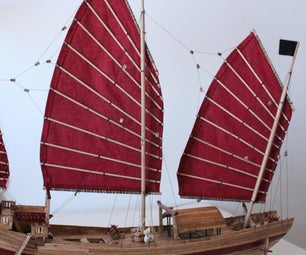Introduction: DIY Chevron Cutting Board
Ever since sharing my tutorial for how to make wood cutting boards a few years ago, I have been obsessed with making cutting boards for every occasion under the sun. Recently I have been wanting to combine my love of patterned plywood and cutting boards into one project (and, let’s be real, I owe someone a gift). So, I decided to try my hand at creating a chevron cutting board and it came out pretty awesome, if I must say so myself. Here’s how I made it happen!
P.S. Want to see this project in action? Check it out on my YouTube channel & subscribe!
--
Supplies
Tools
Table Saw
Miter Saw
Sander & Sandpaper
Wood Clamps
Materials
Walnut Boards*
Maple Boards*
Padauk Boards*
Wood Glue
Cutting Board Oil
* If you are not starting with pre-cut/pre-milled boards, check out my website for a full breakdown of how to mill your own lumber for a project like this!
Step 1: Cut Wood Strips
First step was to cut my boards to the desired width and thickness on the table saw (cutting boards work best and are less work when working with boards that are the same thickness).
Step 2: First Glue-Up
Next, I glued the strips of wood together in an alternating pattern. I staggered them a bit so that I didn't lose too much material once I cut them on an angle in the next step.
Step 3: Make Angled Cuts
Once the strips dried, I removed them from the clamps and cut them at a 25-degree angle. I used my miter saw to make the first cut and then used the table saw for the rest (you can check out my patterned plywood projects to see this in action). I made sure to keep the rows I cut in order!
Step 4: Second Glue-Up
I then alternated each row to create a chevron pattern and glued the pieces together.
Step 5: Sand & Finish
After waiting about a day, I removed the wood from the clamps and sanded the entire board. I also made sure to raise the grain before finishing (which, is a fancy way of saying I sprayed it with water before reaching my final grit).
I then used water to raise the wood grain (this will prevent it from becoming grainy after the first wash), sanded it again once dry, and then applied a cutting board oil.
Step 6: Enjoy!
There are so many fun things you can do with cutting board designs… and this one might be my favorite!














4 Comments
Question 1 year ago
Also, what type of clamps are those? They look awesome!
Question 1 year ago
What thickness did you use for your boards? I believe I read somewhere that 1.5” is the minimum thickness for a cutting board and curious your thoughts
2 years ago
Very nice. Clever! In the video it looked like the board was not flat and level (optical illusion) until the last frame when you placed in down on the grey background.
That overhead wood storage shelf is a great idea for Earthquake prone California. :). I live in California and have lived thru the 1970, and the 1994 earthquakes and have trained myself to think that anything that is high can fall. if it is on the ground then it is safe.
Reply 2 years ago
Luckily, we don't get earthquakes on Long Island! Thanks for the love on the cutting board!